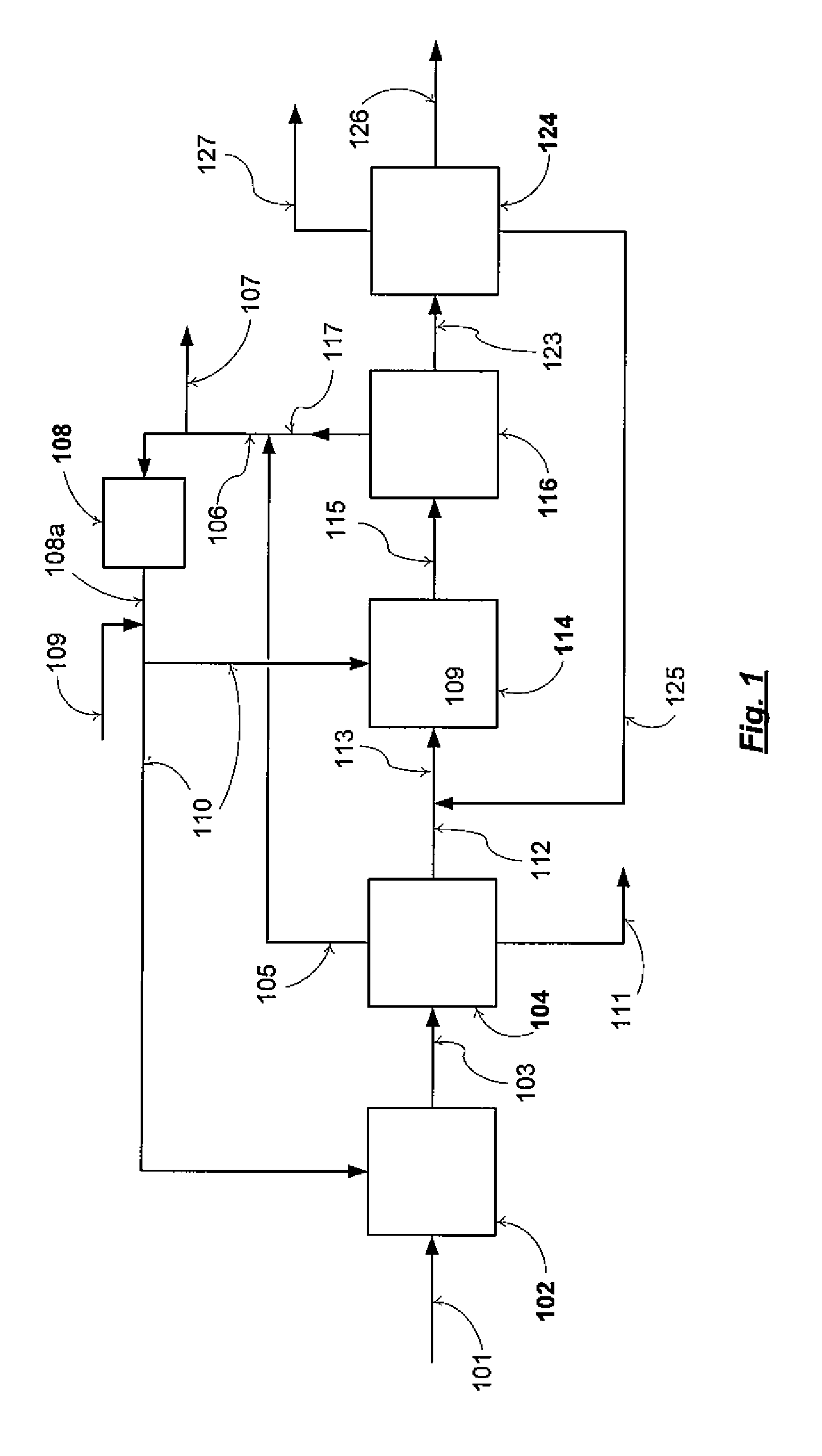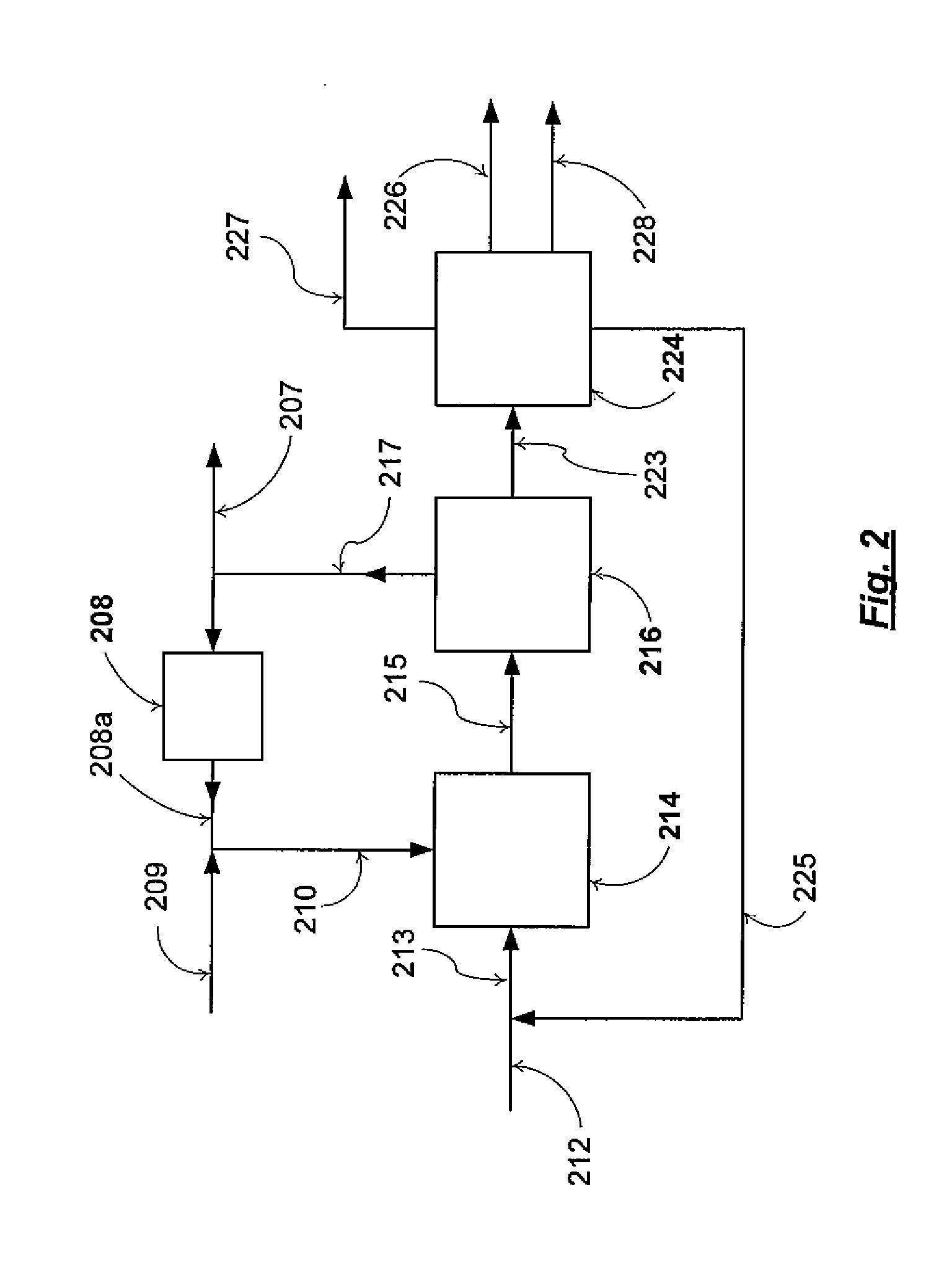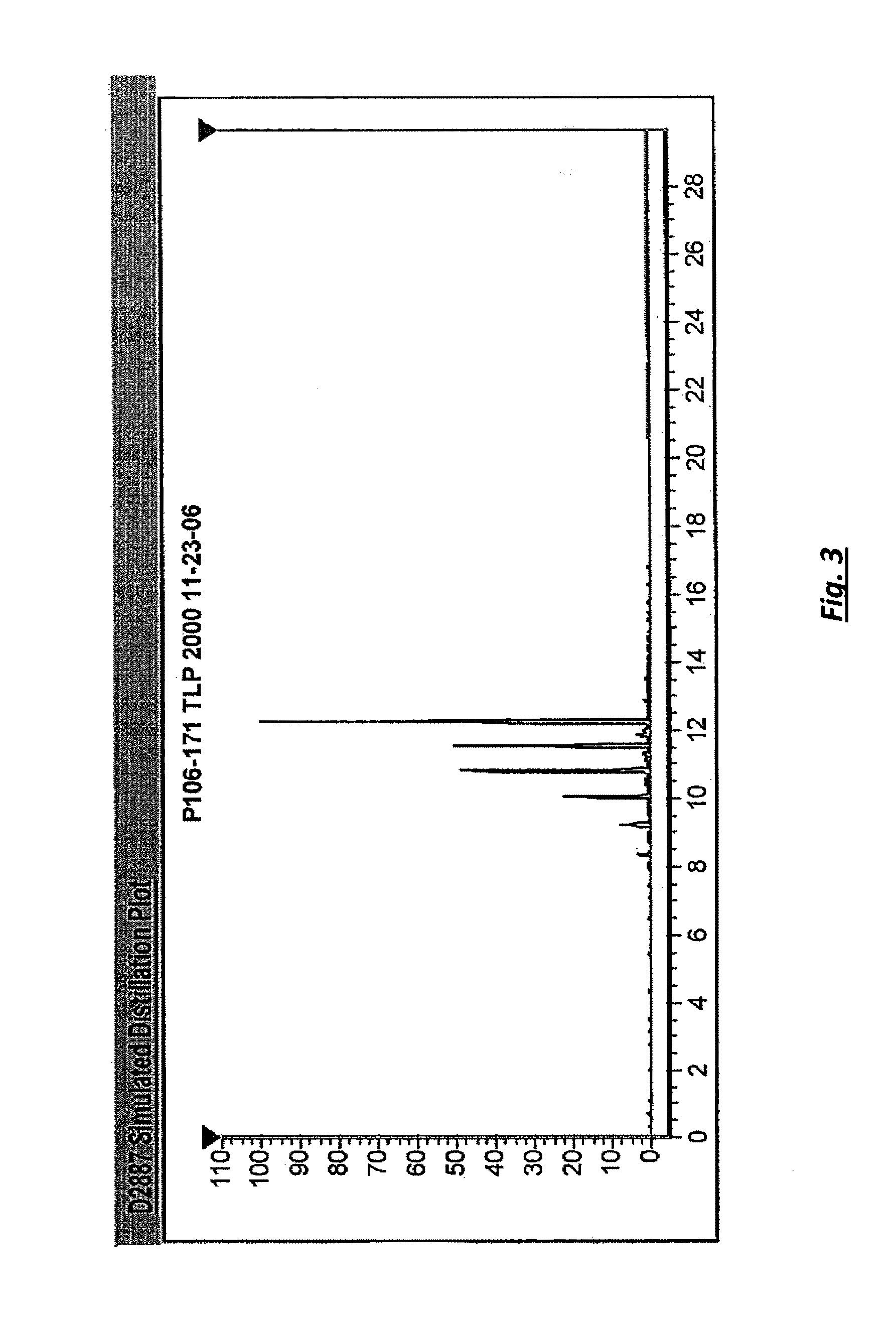Biorenewable naphtha composition and methods of making same
a naphtha composition and biorenewable technology, applied in the direction of biofuels, hydrocarbon oil treatment products, fuels, etc., can solve the problems of high capital costs associated with gasification and f-t conversion, multiple and costly purification steps, and low reliability of gasifiers
- Summary
- Abstract
- Description
- Claims
- Application Information
AI Technical Summary
Benefits of technology
Problems solved by technology
Method used
Image
Examples
example 1
Hydrotreating of a Biorenewable Feed Stock
[0049]The present example demonstrates how naphtha was made from a renewable feedstock. A 100 cc isothermal tubular reactor was filled with 80 cc of a commercial NiMo catalyst and +70-100 mesh glass beads. The catalyst was sulfided with dimethyl disulfide. The sulfiding procedure included step-wise temperature increase to 650° F. After sulfiding, the reactor was cooled to 400° F.
[0050]Next a triglyceride / fatty acid feed was introduced to the isothermal reactor. The reactor was slowly heated to 650° F. to achieve full conversion of the triglyceride / fatty acid feed to n-paraffins. The reactor temperature was further increased to 700° F. to maintain good catalyst activity at 80 cc / hr feed rate (1 LHSV).
[0051]The hydrotreater performance with beef tallow as the triglyceride / fatty acid feed is summarized in Table 1. The yield of total products on feed basis exceeds 100% in part due to addition of hydrogen and also due to measurement errors associ...
example 2
Hydrocracking of Bio-Derived Heavy Hydrocarbons
[0053]The mainly C15-C18 n-paraffin composition obtained from hydrotreating bio-renewable feed stocks was used as feed for a hydrocracking pilot plant. These long chain hydrocarbons were derived via hydrotreating a biorenewable feed in a procedure similar to Example 1. The bio-renewable feed was a blend of chicken fat (45%), brown grease (19%), yellow grease (18%), floatation grease (9%), and miscellaneous waste animal fats from industrial food processing operations (9%). The hydrocracking pilot plant was a prototype of the embodiment of the present invention represented by FIG. 2.
[0054]The hydrocracker reactor system was loaded with 4.8 liters of a commercial hydrocracking catalyst. The catalyst was platinum-palladium on amorphous alumina / silica support. The reactor was pressurized to 1,000 psig. After catalyst preconditioning, the temperature was increased again to achieve the desired level of hydrocracking to produce the biorenewable...
example 3
Bio-Renewable Naphtha as Blendstock for 100% Renewable E-85 Gasoline
[0057]Fuel grade bio-ethanol was purchased from Abengoa Bioenergy (Chesterfield, Mo.). The biorenewable naphtha was produced using the Conditions of Examples 1 and 2 with the feedstock of Example 2. Using these blendstocks, an 85 vol % ethanol blend with the bio-renewable naphtha was prepared. Test aliquots of this 100% renewable E-85 gasoline were taken according to ASTM D 2699 and ASTM D 2700 test methods, and Research and Motor Octane Numbers (RON and MON) were measured. The results are summarized in Table 4.
TABLE 4Octane Rating of 100% Renewable E-85 GasolineTest MethodTest DescriptionResultsASTM D 2699RON101.6ASTM D 2700MON89.6Anti-knock Index(R + M) / 295.6
[0058]The results of Table 4 indicate that the bio-renewable naphtha composition of this invention is well-suited for producing a high octane, 100% renewable gasoline, containing virtually no aromatic hydrocarbons.
PUM
| Property | Measurement | Unit |
|---|---|---|
| Temperature | aaaaa | aaaaa |
| Temperature | aaaaa | aaaaa |
| Temperature | aaaaa | aaaaa |
Abstract
Description
Claims
Application Information
 Login to View More
Login to View More - R&D
- Intellectual Property
- Life Sciences
- Materials
- Tech Scout
- Unparalleled Data Quality
- Higher Quality Content
- 60% Fewer Hallucinations
Browse by: Latest US Patents, China's latest patents, Technical Efficacy Thesaurus, Application Domain, Technology Topic, Popular Technical Reports.
© 2025 PatSnap. All rights reserved.Legal|Privacy policy|Modern Slavery Act Transparency Statement|Sitemap|About US| Contact US: help@patsnap.com



